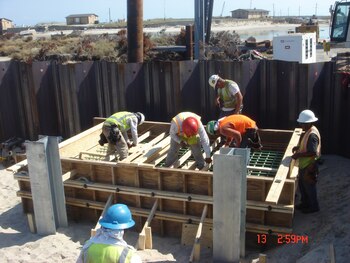
The construction industry is a diverse landscape with various building construction methods tailored to meet specific needs and requirements. Whether you’re planning a residential project, commercial venture, or industrial facility, understanding the different types of building construction is essential for making informed decisions. In this comprehensive guide, we’ll explore various building construction types, their characteristics, advantages, and considerations, providing you with valuable insights to embark on your construction journey. For quality materials and expert guidance, consider partnering with a reputable building supplier to ensure a successful and efficient construction process.
What is Building Construction?
Building construction involves the creation of structures that serve various purposes, including residential, commercial, institutional, and industrial applications. Each type of building construction is designed to cater to specific needs, taking into account factors like design, materials, and safety standards.
Types of Building Construction
Residential Construction
Residential construction focuses on building single-family homes, multi-family residences, townhouses, and condominiums. It is further divided into three categories:
 Wood Frame Construction
Wood Frame Construction
This is the most common type of residential construction, utilizing wooden frames and trusses to support the structure. It is cost-effective, quick to construct, and suitable for low-rise buildings.
Concrete Block Construction
Concrete blocks are used to form the walls and foundation of the building. This method provides better insulation and durability than wood frame construction.
Steel Frame Construction
Steel frame construction offers exceptional strength and stability, making it ideal for high-rise buildings and earthquake-prone areas.
Commercial Construction
Commercial construction involves the creation of structures for businesses, retail spaces, offices, and entertainment venues. The following are common types of commercial construction:
Steel Frame Construction
Steel frame construction is prevalent in commercial projects due to its flexibility, allowing for large open spaces and customized designs.
Concrete Construction
Concrete construction is suitable for commercial buildings requiring high load-bearing capacity and fire resistance.
Pre-engineered Metal Buildings (PEMBs)
PEMBs are constructed from pre-fabricated metal components, offering cost-efficiency and faster construction timelines.
Institutional and Public Construction
Institutional and public construction focuses on structures such as schools, hospitals, government buildings, and recreational facilities. Common construction methods include:
Reinforced Concrete Construction
Reinforced concrete construction provides the strength and durability needed for large institutional structures.
Pre-cast Construction
Pre-cast construction involves producing building elements off-site and assembling them on-site, speeding up construction and ensuring precision.
Modular Construction
Modular construction involves fabricating modules or sections of a building in a factory, allowing for faster installation and reduced on-site work.
Industrial Construction
Industrial construction deals with structures like warehouses, factories, power plants, and distribution centers. Common construction methods include:
Tilt-up Construction
Tilt-up construction involves pouring concrete on-site and tilting it into place to create walls, offering cost-effectiveness and fast construction.
Metal Building Systems
Metal building systems are ideal for industrial structures, providing ample space, durability, and energy efficiency.
PEB (Pre-engineered Buildings)
PEB offers flexibility and cost-effectiveness, making it suitable for various industrial applications.
Factors to Consider in Building Construction
Location and Environment
Consider the site’s location, climate, and environmental factors to choose a construction method that suits the area’s specific conditions.
Budget and Cost Efficiency
Evaluate your budget and choose a construction type that aligns with your financial capabilities while ensuring cost-effectiveness in the long run.
Aesthetics and Design
Select a construction method that complements your desired architectural design and aesthetics.
Sustainability and Energy Efficiency
Opt for building construction methods that promote sustainability, energy efficiency, and environmentally friendly practices.
Advantages of Partnering with a Building Supplier
Quality Materials
A reputable building supplier offers a wide range of high-quality construction materials, ensuring the longevity and performance of your building.
Expert Guidance
Building suppliers possess expertise and knowledge of various construction methods and can provide valuable guidance throughout the construction process.
Timely Delivery
Reliable building suppliers prioritize the timely delivery of materials, keeping your construction project on schedule.
Cost Savings
By sourcing materials from a trusted building supplier, you can often benefit from competitive prices and potential cost savings.
Conclusion
Understanding the different types of building construction is essential for successfully executing any construction project. Whether you’re building a residential home, commercial space, institutional facility, or industrial structure, choosing the right construction method is crucial for meeting your specific needs and requirements. Evaluate factors like location, budget, aesthetics, and sustainability when deciding on a construction type. Additionally, partnering with a reputable building supplier can significantly enhance your construction experience by providing quality materials and expert guidance. By embracing the right building construction method and utilizing the resources of a reliable building supplier, you can embark on your construction journey with confidence and achieve a successful and enduring building project.

Leave a Reply